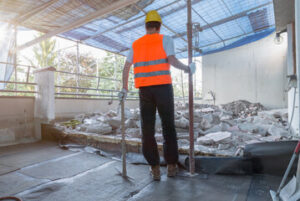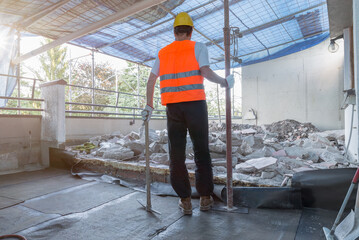Debris removal plays a crucial role in maintaining clean and safe environments. As urbanization and industrial activities increase, the volume of debris generated has also risen.
Effective removal methods are essential to prevent environmental degradation and health risks. Innovations in debris removal have introduced more efficient and sustainable techniques. Visit https://www.alwaysrecoveringjunk.com for more details.
One emerging trend involves automated debris collection systems. These systems use advanced sensors and AI to identify and remove debris in real-time. Automation reduces the need for manual labor and increases efficiency. It also minimizes the time needed to clear large areas.
Eco-friendly debris removal methods are gaining traction. Biodegradable materials and recycling techniques are being integrated into debris management. This reduces the environmental impact of disposal. Sustainable practices promote a circular economy and minimize waste.
Advanced filtration systems are being used to handle smaller debris particles. These systems separate microplastics and other fine particles from natural elements. Improved filtration protects water sources and ecosystems from contamination. It enhances the overall effectiveness of debris removal.
Debris removal in disaster-prone areas requires specialized strategies. Rapid response teams equipped with heavy-duty machinery can clear large volumes of debris quickly. This prevents secondary hazards such as blocked roads and polluted water sources. Efficient removal supports faster recovery and rebuilding efforts.
Remote monitoring technology enhances debris removal efficiency. Drones and satellite imaging provide real-time data on debris accumulation. This helps teams plan and execute removal operations more effectively. Remote monitoring also ensures that resources are allocated where they are needed most.
Urban debris removal presents unique challenges due to population density and infrastructure limitations. Compact equipment and mobile collection units are being designed for urban settings. These solutions improve accessibility and reduce disruption. Flexible strategies ensure that debris removal adapts to different urban layouts.
Construction sites generate large amounts of debris that require systematic removal. Segregating construction waste at the source increases recycling rates. Efficient removal methods prevent materials from entering landfills unnecessarily. This reduces costs and supports sustainable building practices.
Debris removal in marine environments involves specialized equipment. Floating barriers and skimmers are used to capture debris from the water surface. Deep-sea removal techniques target debris on the ocean floor. Protecting marine ecosystems from debris enhances biodiversity and water quality.
Public awareness campaigns play a vital role in supporting debris removal efforts. Educating communities about proper waste disposal reduces the amount of debris generated. Participation in clean-up events increases public involvement. Greater awareness promotes long-term behavioral change.
Industrial debris removal requires compliance with strict safety and environmental regulations. Hazardous materials need to be handled and disposed of properly. Specialized training ensures that debris removal teams work safely and efficiently. Following regulations minimizes environmental and health risks.
Technological advancements have improved the efficiency of debris sorting. Automated sorting machines use machine learning to separate recyclable and non-recyclable materials. Improved sorting reduces contamination and increases recycling rates. Higher efficiency leads to lower operational costs.
Debris removal from transportation networks requires strategic planning. Railways, highways, and airports need to remain operational during removal efforts. Coordinating removal schedules with transportation authorities minimizes disruption. Efficient removal enhances public safety and traffic flow.
The rise of smart city infrastructure has influenced debris removal strategies. Integrated waste management systems use data to predict debris accumulation patterns. This allows for proactive removal and better resource allocation. Smart technologies improve the responsiveness of debris removal services.
Bio-remediation techniques are being explored for debris removal in sensitive areas. Microorganisms are used to break down organic debris naturally. This reduces the need for chemical treatments and protects local ecosystems. Bio-remediation supports long-term environmental health.
Seasonal debris removal requires adaptive strategies. Storms, floods, and other weather events increase debris accumulation. Flexible removal plans accommodate changing weather patterns. Seasonal adjustments ensure that removal efforts remain effective throughout the year.
Underwater debris removal involves complex logistical challenges. Specialized diving teams and robotic equipment are used for deep-sea operations. Removing debris from ocean floors requires precision and care. Protecting marine habitats from human-generated debris supports ecological balance.
The use of biodegradable packaging reduces the volume of debris. Industries are adopting eco-friendly materials to minimize waste. Reducing the source of debris decreases the burden on removal systems. Sustainable production practices complement effective debris removal efforts.
Public-private partnerships are improving debris removal outcomes. Collaboration between government agencies and private companies increases resources and expertise. Joint efforts lead to more comprehensive removal strategies. Shared responsibility enhances accountability and efficiency.
Advancements in material recovery from debris are increasing resource reuse. Metals, plastics, and glass are being extracted and repurposed. This reduces the demand for raw materials and decreases waste. Material recovery contributes to a circular economy.
Training programs for debris removal professionals have become more specialized. Courses cover the latest technologies and safety protocols. Skilled teams improve the speed and accuracy of removal operations. Professional development enhances overall service quality.
The expansion of recycling facilities supports more effective debris removal. Increased processing capacity reduces the volume of debris sent to landfills. Efficient recycling infrastructure strengthens waste management systems. Expanding facilities improves long-term sustainability.
Consumer behavior also impacts debris removal efficiency. Reducing single-use products lowers the volume of waste generated. Promoting reusable materials and responsible consumption reduces the strain on removal systems. Behavioral changes enhance long-term debris management efforts.
Artificial intelligence is improving debris removal decision-making. AI systems analyze data to predict debris accumulation and removal needs. Machine learning enhances the accuracy of removal strategies. AI-driven approaches increase overall operational efficiency.
Debris removal from agricultural sites requires careful handling. Organic and inorganic materials need to be separated for proper disposal. Composting and recycling are integrated into agricultural waste management. Effective removal supports soil health and sustainable farming practices.
Environmental restoration projects often include debris removal as a key component. Removing debris from natural habitats allows ecosystems to recover. Restoration efforts improve biodiversity and environmental health. Clean environments support sustainable development.
Emergency debris removal protocols are essential for disaster response. Clear guidelines ensure that removal teams act quickly and safely. Coordinated response minimizes environmental and structural damage. Emergency readiness strengthens community resilience.
Advancements in debris compression technology have improved transport efficiency. Compressed debris takes up less space, reducing transport costs. More compact loads increase the number of debris batches processed. Compression enhances overall removal efficiency.
Consumer electronics recycling is becoming a major focus of debris removal. E-waste contains valuable materials that can be recovered. Specialized removal techniques separate hazardous components safely. Effective e-waste management reduces environmental risks.
Debris removal remains a critical component of environmental management. Innovative strategies and technological advancements are improving efficiency and sustainability. Proactive removal efforts reduce environmental impact and enhance public safety. Continuous improvement in debris removal practices supports long-term ecological balance.

